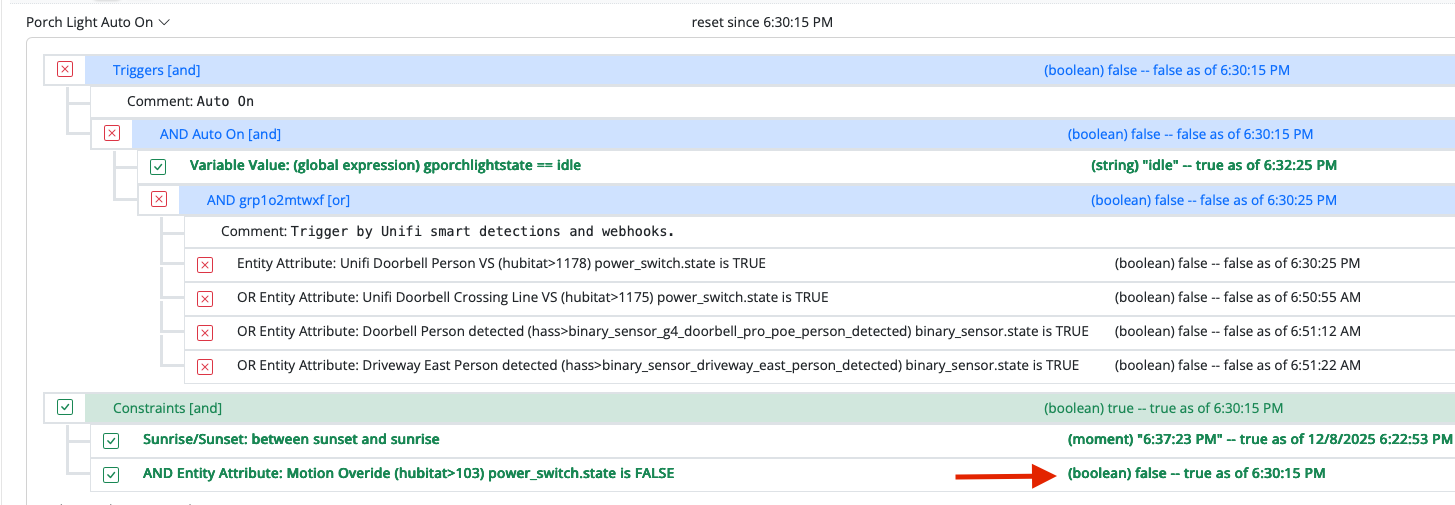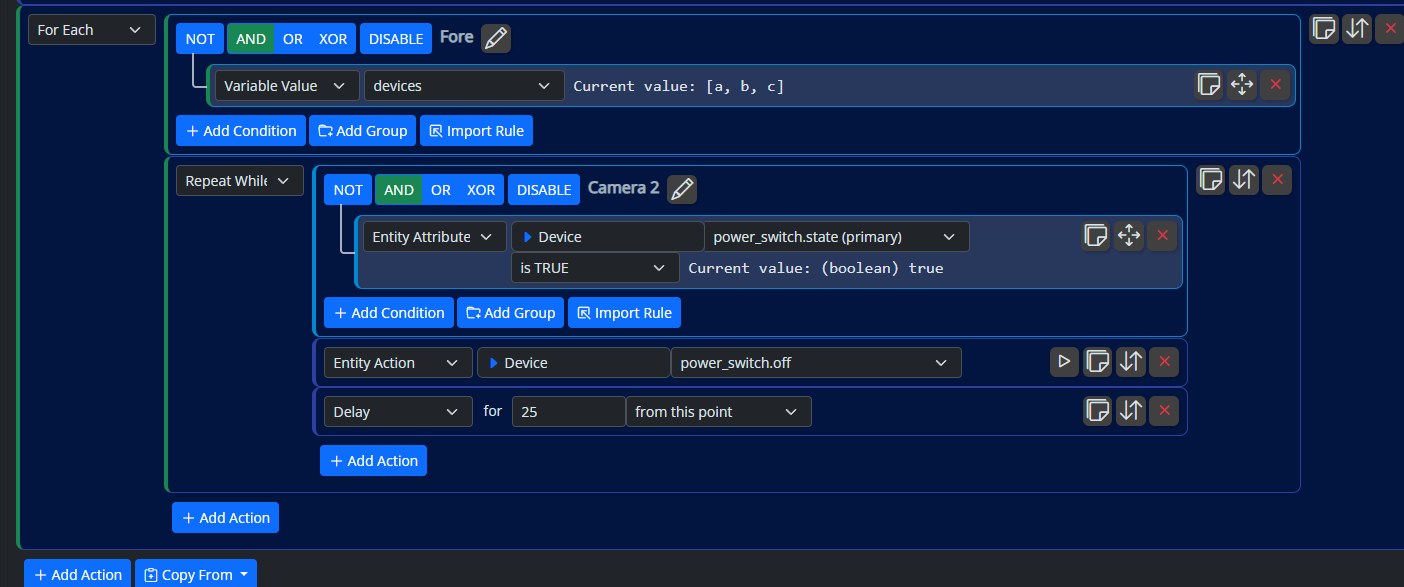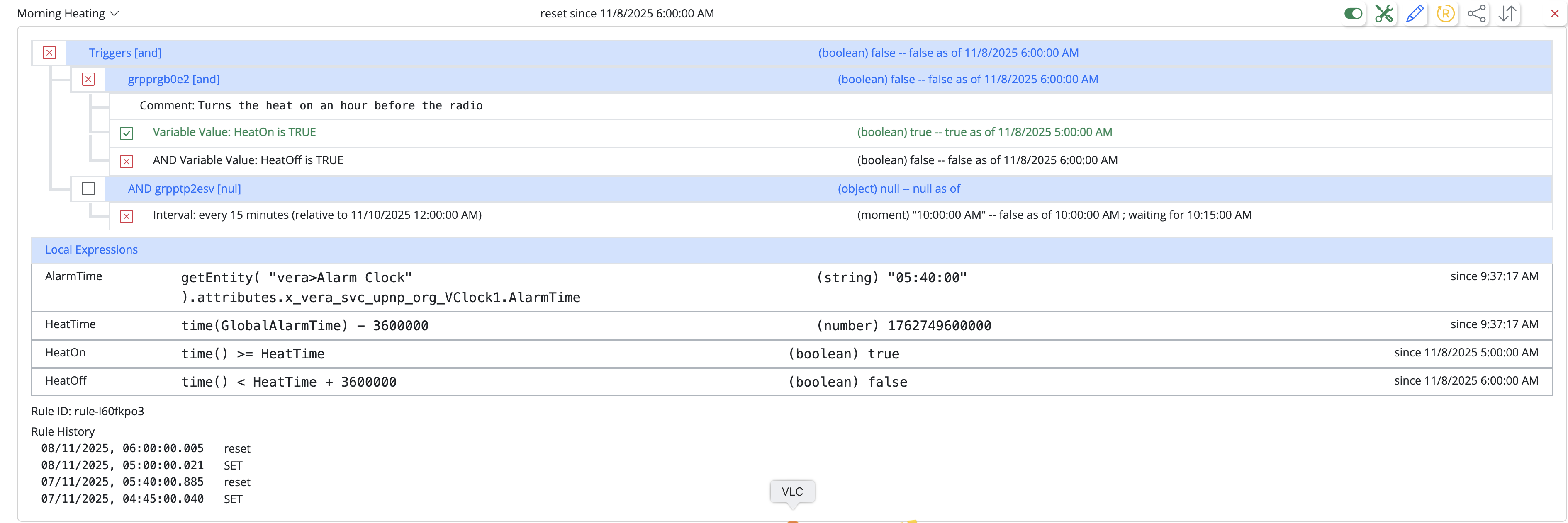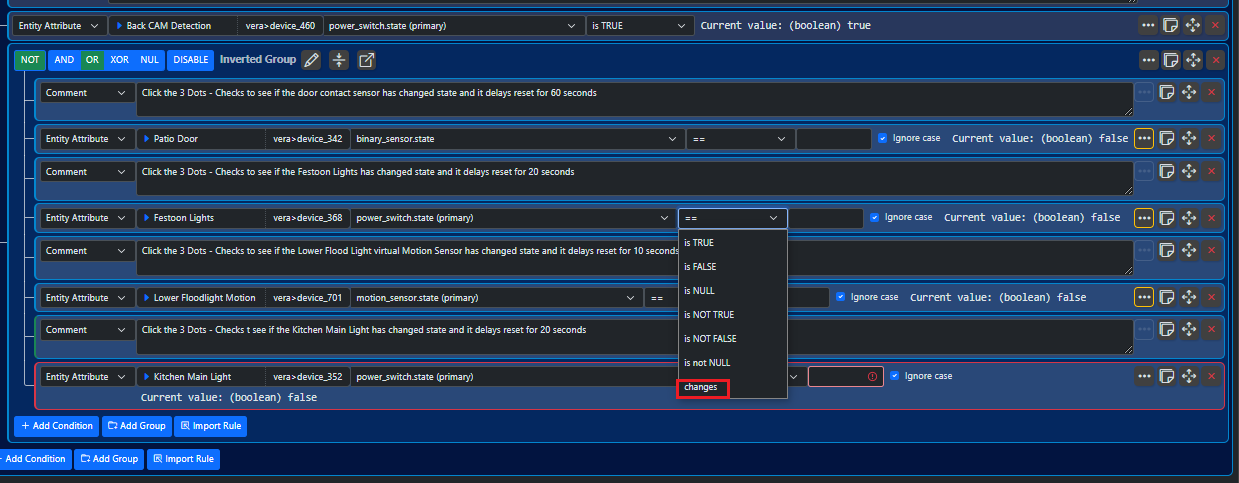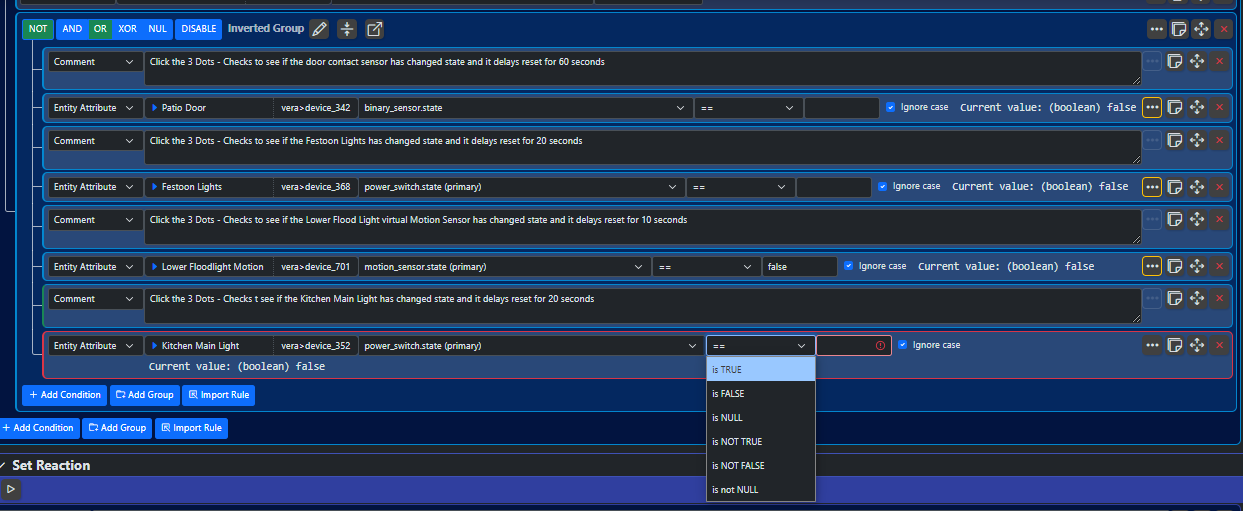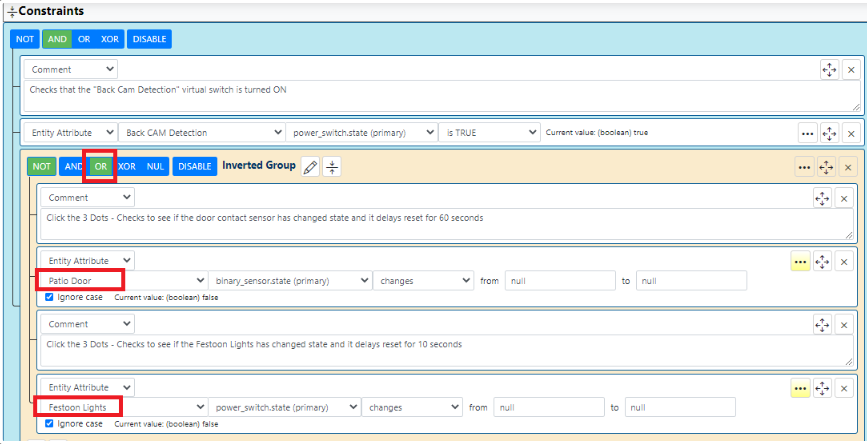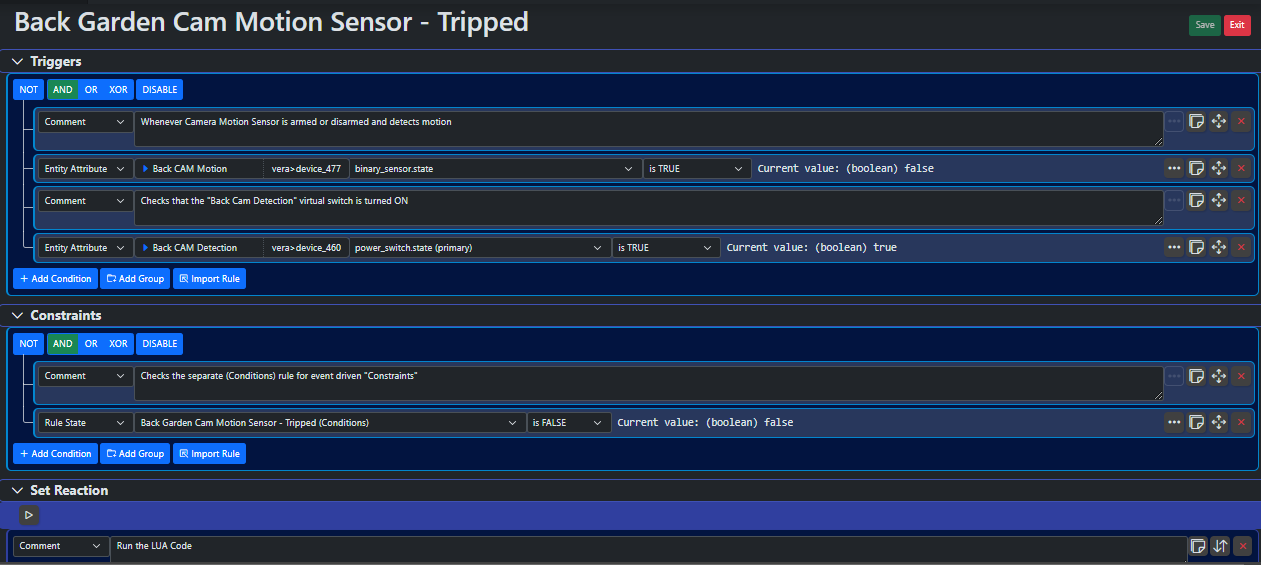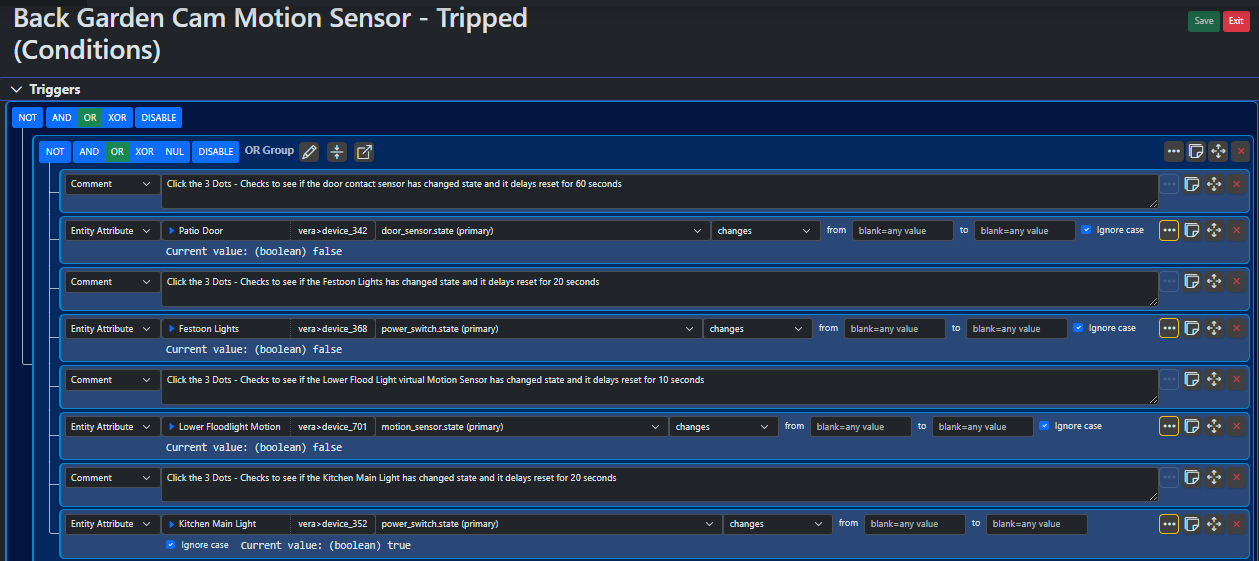Has something changed with the "Changes" operator in Constraint groups ?
-
Hi
I was looking at an old rule and I wanted to edit it, to add another Constraint, however I cannot seem to do it.
On this screen shot you can see an existing entry in the Constraints and on its pull down menu the "Changes" option is available.
However on the new line I just added I have no changes option in its pull down menu.
Here is the original now locked post about this topic.
https://smarthome.community/topic/395/contact-sensor-opened-1-minute-ago-how?_=1736354690742
If you look on the old screen shots on that post, I was using the "changes" operator. Like this:
However today when I edited this rule the operators are showing as == and not as changes on all the entries in the Constraints area.
Also the old entries now say -- and the value is blank. But on the new line I just added it says that is not valid, so not sure how the old lines are like that.
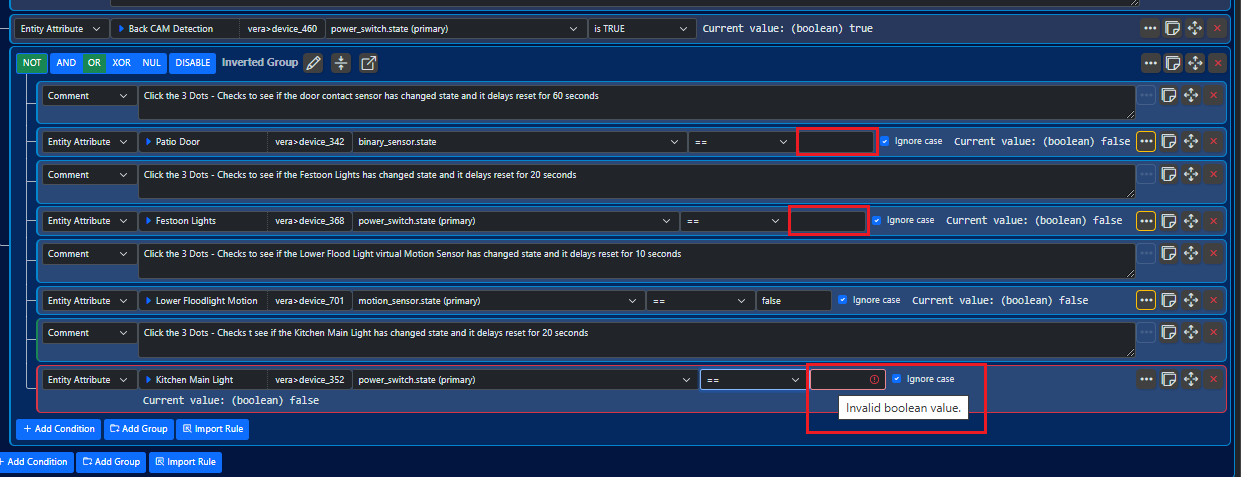
So I am a bit confused what happened.
Thanks
-
Hi
I was looking at an old rule and I wanted to edit it, to add another Constraint, however I cannot seem to do it.
On this screen shot you can see an existing entry in the Constraints and on its pull down menu the "Changes" option is available.
However on the new line I just added I have no changes option in its pull down menu.
Here is the original now locked post about this topic.
https://smarthome.community/topic/395/contact-sensor-opened-1-minute-ago-how?_=1736354690742
If you look on the old screen shots on that post, I was using the "changes" operator. Like this:
However today when I edited this rule the operators are showing as == and not as changes on all the entries in the Constraints area.
Also the old entries now say -- and the value is blank. But on the new line I just added it says that is not valid, so not sure how the old lines are like that.

So I am a bit confused what happened.
Thanks
-
If you need to use event-driven conditions for a constraint, the simple workaround is to create a rule containing those conditions, and then use a "Rule State" condition in the original rule's constraints to look at the state of the new rule.
-
OK thanks, I think that works!
So I have two rules now the main 1st rule that detects Motion on the IP Camera and also a Virtual Switch must be True, those are the two triggers, this is the rule with the Actions in it.
In the Constraints I am referencing the "Rule State" of the 2nd new rule and that must be False.
This is the new 2nd rule and I have just used the Triggers with the "Changes" operator.
So if any of these devices change their state within the X number of Seconds the OR group will be True thus the 1st main rule would NOT run its Actions in that case.
But if none of these devices have changed their state within the X number of Seconds the OR group will be False thus the 1st main rule would run its Actions.
-
 T toggledbits locked this topic on
T toggledbits locked this topic on


